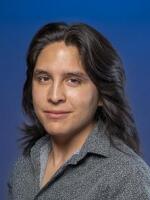After it happened in many other schools over the years, the Uvalde, Texas school shooting seems like it might be a wake up call.
Lawmakers say this time they really are going to do something about gun safety — or at the very least, try to make our schools safer.
But how do you do that? Do you arm teachers? Is it metal detectors at doors? Redesign schools to limit entryways?
Teachers have died in many of the school shootings around the country. What do they want? Marie Neisess represents some 20,000 teachers in the Clark County School District.
It’s gut wrenching, even from afar, said Marie Neisess with the Clark County Education Association.
“Will that ever happen here in Vegas? We hope not. But I think as a teacher, when you see those things happen, you start looking at your day, and you start looking at your classroom and it's terrifying,” she said.
As far as safety in Southern Nevada goes, she said she thinks the Clark County School District is “moving in the right direction,” but what’s concerning to teachers is how all 370 schools can be prepared quickly.
Lt. Brian Zink said CCSD police officers are trained for active shooter situations annually. If any officer from their department responds to a school during an active shooting, they “go on in, they don’t wait for backup,” he said. As other teams arrive, they’ll then create a plan. The officers train with those from Las Vegas, North Las Vegas, and Henderson police departments, as well as fire departments.
“It's a community effort. We all work together, we train together, because we want to be prepared for the unthinkable to happen,” Zink said.
Additionally, he said all schools do a hard lockdown drill once per year, so members of the schools know what they can do during an active incident.
Neisess said educators are not allowed to put their hands on students. She said they’re told, “Well, you have to do what you think is best during that situation.”
“It's always around funding, we never have enough personnel to help our students. And so, it's like we're playing a catch-up game to try to fix all of these things, when, in reality, the schools have never been funded adequately here,” she said.
Rebecca Dirks Garcia, the president of Nevada PTA, said she wants to see campuses “hardened” – more security measures, more police. “We don't have enough adults on campus, we don't have the facilities and infrastructure in place.”
Zink said along those lines, all schools are being looked at to configure them to a single point of entry type of school. Many schools already have on their own, he said.
There are intervention teams, including the CCSD Crisis Response team, led by Joe Roberts. He said they mostly come in after an incident, to help with the trauma and mental health. However, they’ve been working with school psychologists, counselors, and social workers on training to prevent incidents like shootings.
“The juggling act, though, is where do we carve out that time for that much needed instruction?” he said.
Even when a mass shooting takes place in another state, Roberts said they see an uptick in student anxiety and safety insecurity. They see that on events’ anniversaries, even within Southern Nevada.
A Clark County high school student called into State of Nevada to share her experience. She said she’s felt safe at her school, but recent shootings have changed her view.
“I mean, we have multiple entries around our school. It's a huge school,” she said. She hadn’t thought of those things, or how many officers are on campus, until recently. “It didn’t feel normal … everything’s different, feeling nervous.”
There’s been a rise in incidents and mental health referrals, said CCSD Trustee Linda Cavazos, speaking only as a mental health professional.
“I would say that the most glaring thing that's really jumped out at me, a red flag so to speak, is the intensity of the type of referrals that I'm getting from school counselors, other colleagues who do not specialize in trauma,” she said. “But right now, after the recent shootings, this is not something that is pervasive over all age groups. But I am seeing an alarming increase in the younger and younger ages of kids that are needing help with feelings of sadness, sadness, hopelessness.”
She doesn’t outright blame the pandemic, but says it was a multi-pronged, multifaceted reason. She said the issues of violence, mental health and suicide were the same when she was an educator 20 years ago.
“This can't just be crisis reactive,” Cavazos said. “We have to look at the underlying root causes and be able to do some interventions. But when you have a third grader that is telling you that she is afraid that because when she has hiccups -- that's when she's usually afraid or anxious -- and she's asking me, ‘What if I get the hiccups, and there's a shooter, is it going to be my fault that my friends get shot?’”
Marie Neisess, president, Clark County Education Association; Brian Zink, lieutenant, Clark County School District Police Department; Linda Cavazos, licensed mental health professional, former CCSD and UNLV educator and District G trustee; Joe Roberts, director, Crisis Response Team, CCSD; Rebecca Dirks Garcia, president, Nevada Parent Teacher’s Association










